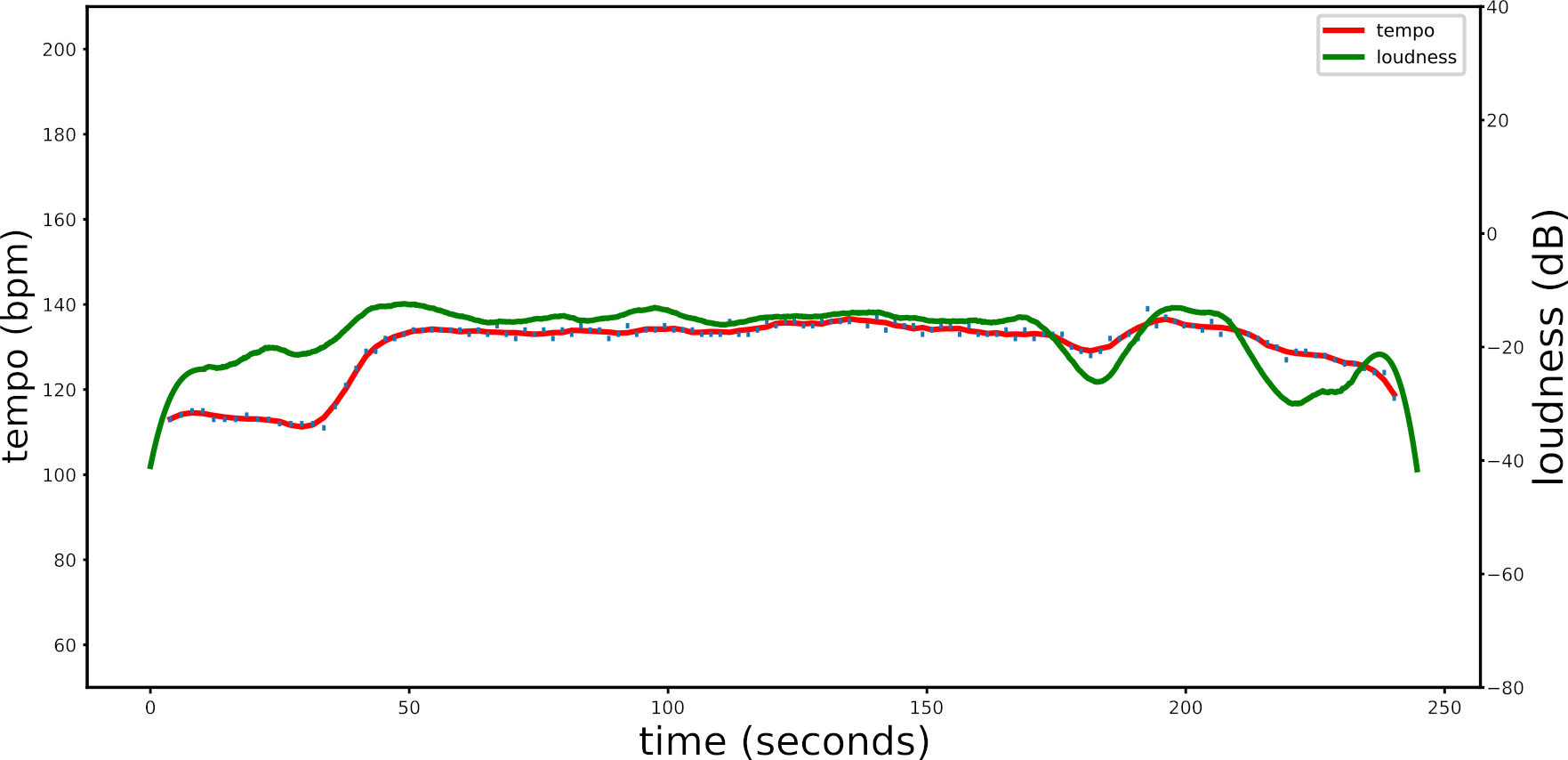Tempo, Micro-tempo and Dynamics in Uruguayan Candombe Drumming
Computer-assisted analysis of the correlation between tempo and dynamic in candombe drumming, and their evolution during performance.
Luis Jure and Martín Rocamora
January 2, 2020
Paris, France
Analytical Approaches to World Music, 2020

Abstract
The purpose of this research is to analyse the treatment of tempo in Uruguayan candombe drumming, and its relationship with dynamics. Tempo in candombe may vary from ca. 100 bpm (beats per minute) for a slow performance to around 150 bpm for very fast performances, with most characteristic tempos in the range of ca. 130 to 136 bpm. It is common to begin at a slow tempo, and then accelerate to reach typical tempos. After that, minor fluctuations are idiomatic. A core concept in candombe performance is “subir la llamada”, an increase in perceived energy that involves both a–sometimes very subtle–raise in tempo and an associated increase in dynamics. This process entails complex mechanisms of interpersonal entrainment. For this research, a database was used consisting of 36 recordings of groups of three to five drums, involving a total of 26 renowned performers representing different generations and traditional candombe styles. All the recordings had their corresponding files with metrical annotations, and a Python script was developed to calculate the tempo in bpm at each downbeat, based on the duration of the cycle to the following downbeat. These values were then used to plot a smoothed tempo curve. To represent the variations in dynamics throughout the recording, a loudness value per audio frame was computed based on an A-weighted power spectrogram in the mel frequencies. The obtained frame-wise loudness values were temporarily smoothed and expressed in decibel units. Processing all the recordings in the dataset it was possible to identify different approaches to tempo and how it relates to dynamics: while some performances exhibited a high degree of stability throughout, in others the initial slower tempo was followed by an accelerando. Of special interest were the recordings with a pronounced variability in tempo, requiring a high degree of entrainment among the performers. For comparison purposes, some recordings of Ewe drumming and Cuban rumba were also analysed. These traditions share two features that are absent in candombe drumming: the interaction of the drums with singers, and an explicit timeline pattern. The analysed performances were characterised by a high stability in tempo.